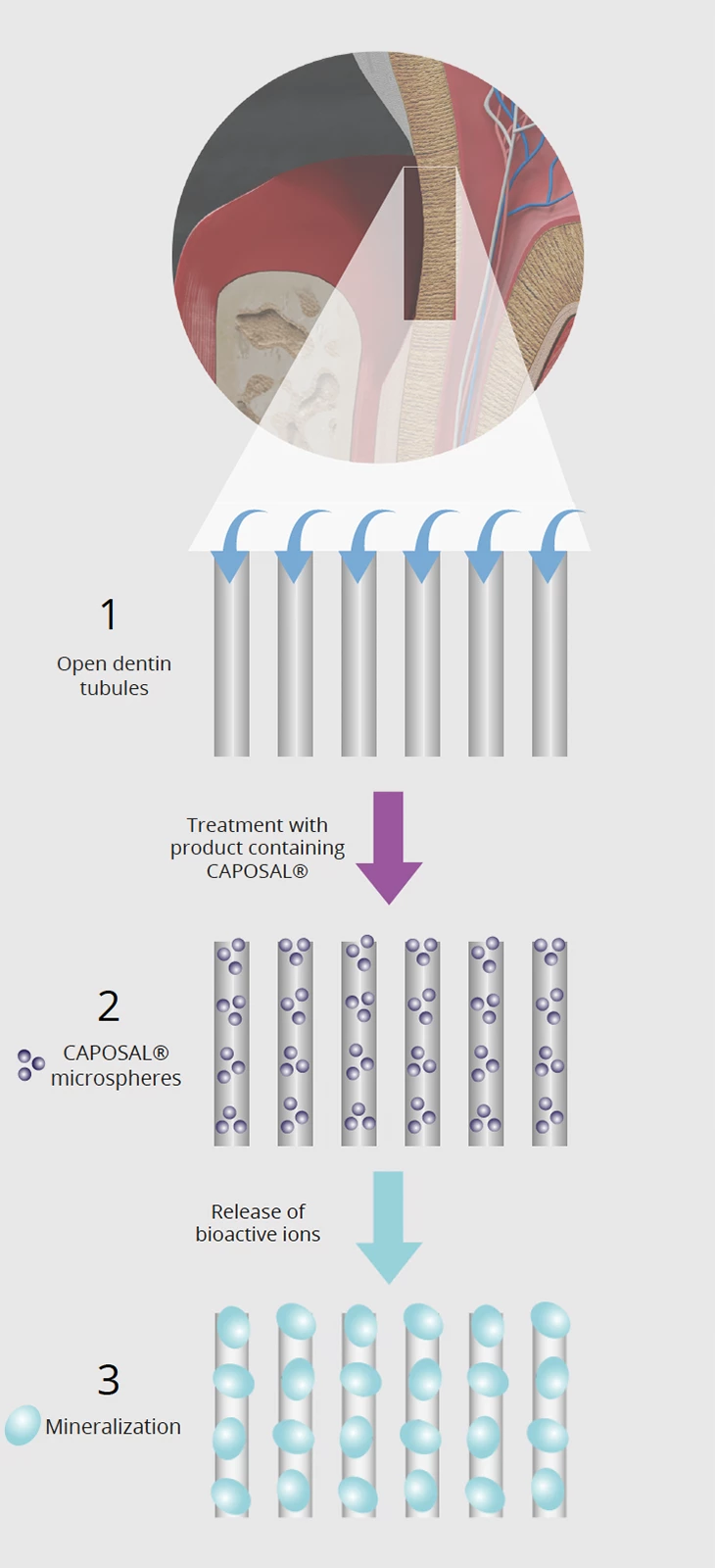A transformative approach to tooth mineralization and bone augmentation
The CAPOSAL® Technology
Calcium phosphates form the mineral basis of bones and teeth in our bodies. Psilox AB's CAPOSAL® technology utilizes hollow and porous microspheres, composed of the same substances, ensuring biocompatibility and bioresorbability. These microspheres serve as carriers for ions essential to bone and tooth remineralization.
Under appropriate conditions, CAPOSAL® spontaneously grows from a salt solution, without surfactants or templates, resulting in a material free of organic residues through a biomimetic mineralization process. Extensively characterized, these microspheres find application in e.g. tooth remineralization, tooth whitening, and bone augmentation.
CAPOSAL® is an amorphous calcium phosphate (ACP), a metastable phase more soluble than its crystalline counterparts, like hydroxyapatite (HA), or tricalcium phosphate (TCP), enhancing its bioactivity due to the more readily released calcium and phosphate ions. As a precursor to apatite, ACP plays a crucial role in natural mineralization, presenting synthetic ACP as a promising area for biomedical research despite challenges in stability and handling.
Commercially, ACP’s stabilization is often achieved in situ, such as by mixing calcium and phosphate salts just before application. Psilox’s innovation overcomes these challenges by stabilizing ACP with magnesium substitution, eliminating allergens associated with the alternative milk-based casein phosphopeptide (CPP). This approach not only enhances particle stability and prevents aggregation but is also cost-effective by streamlining the production process.
CAPOSAL® promotes rapid ion release, leading to the swift formation of nanocrystalline hydroxyapatite structures and deep mineralization within dentin tubules, sealing them effectively. In the presence of fluoride ions, it forms fluorapatite, offering enhanced durability and protection. Its distinctive features include optimal form, surface affinity, rapid degradation, and the ability to deliver active substances efficiently, underscoring its potential for advanced dental applications.
